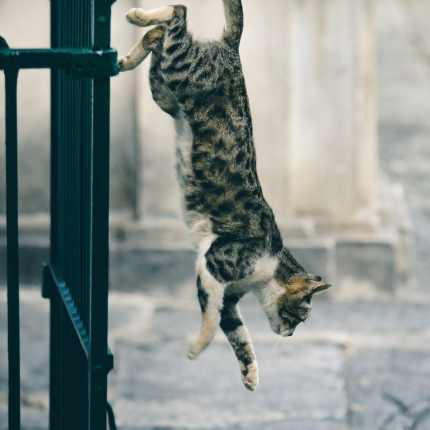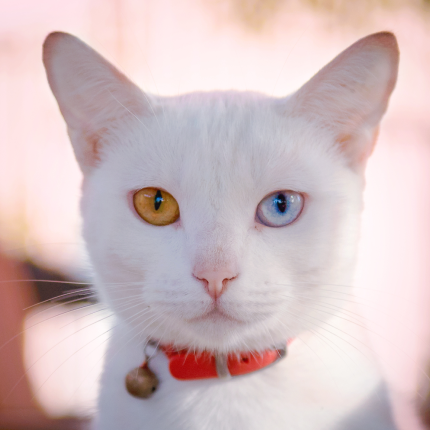Why Cats Always Land On Their Feet

Have you ever wondered why cats are so nimble and can always land on their feet? Repeatedly, we have seen cats fall from great heights but always manage to save themselves just in time. Cats are incredibly agile creatures, but even still, it is always surprising to see them land on their feet after jumping from high surfaces. So how is all this possible? There are many factors as to why cats can do this amazing feat and it may just surprise you. The main trait we associate with cats is flexibility or nimbleness. Cats are indeed very flexible due to their highly unique skeletal structure. However, there are three known and main factors that attribute to this special skill; Flexibility, righting reflex, and instinctual behavior.
advertisement
Flexibility
Due to their uniquely built skeletal structure, flexibility is one of the most well-known characteristics a cat has. Their vertebrae have a special, flexible, elastic cushioning on the disks which makes their spine rotate more than the spines of most other animals. This elastic cushioning allows for them to rotate their body 180 degrees left or right while humans can only rotate their torso 90 degrees. To picture this, a cat can make it so that their head and front legs are facing the opposite direction of their hips and back legs. Cats also have no collarbone, which allows them to squeeze through the tightest of places and the ability to respond very quickly when falling.
Righting Reflex
The righting reflex is one of the biggest factors as to why cats always land on their feet. It is defined as a cat’s innate ability to orient itself as it falls in order to land on its feet. Cats have a unique ability to realign and fix their body while falling. This is due to their inner ears being their compass for balance. This allows them to know when they are right side up while falling. Due to the combination of their flexible spine and no collarbones, they can react very quickly while falling as adjust as needed. It is believed that cats develop this reflex as kittens, and it is fully developed in as little as 7 weeks.
advertisement
Instinctual Behavior
A cats ability to land on their feet after a fall is an instinctual behavior! This means that when a cat is falling it automatically responds to falling by turning it’s body midair. Cats naturally have this behavior ingrained into them so they aren’t taught this skill over time. As previously stated, It is believed that cats develop this reflex as kittens, and it is fully developed in as little as 7 weeks! There are obviously other factors that make it so cats don’t always land on their feet. This could be due to age, weight, and other overall health factors.
Cats are one of the most fascinating animals that we have the pleasure of calling a pet, companion, or even best friend. On top of being utterly adorable and cuddly, they are also scientific marvels! Take a closer look at your cat and see if you can see any of the unique features mentioned. While you see your cat falling, you might want to jump in to save them, but just remember they were literally born to save themselves! However, I don’t think anyone would judge wanting to save your pet.

Featured Articles

Why Do Cats Roll Over Into Their Backs But Not Let You Touch Their Bellies?
It’s common knowledge dogs love to have their tummies rubbed when they freely lay down before you and roll onto their backs. But, if you’re also familiar with cats, you know that when they roll onto their backs with their bellies exposed, rubbing the belly will most likely result in…

Polydactyl Cats: Just More Beans to Love
Polydactyl cats have become extremely popular in recent times. As a result, more and more people are interested in learning more about this six-toed cat and want to get one of their own. If you are a cat lover intrigued by polydactyl cats, you have come to the right place….

The Odd-Eyed Cat (AKA Heterochromia)
Cats are already beautiful and fascinating creatures, but people are bound to take notice when they have something as captivating as two different colored eyes. Odd-eyed cats always have one blue eye paired with either a green, yellow, or brown eye. This form of heterochromia occurs in other animals, including…